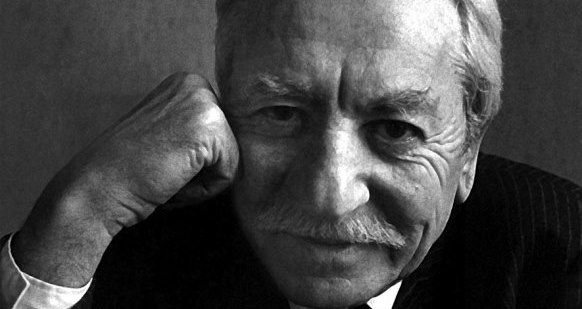
source
Tarık Buğra came to the world in Akşehir, Turkey.
After completing his studies in primary and secondary school, he started to study at İstanbul Lisesi, where he studied as a boarder.
In 1936, he graduated from Konya High School and enrolled in Istanbul University Faculty of Medicine. Two years later, he went to the Faculty of Law and then to the Faculty of Literature. He left at the Faculty of Letters without giving his graduation thesis.
He began with journalism began in 1947.
After 1951, he wrote articles in Milliyet, Vatan, Yenigün, New Istanbul and Weekly Road magazines. In some of these newspapers and magazines, he worked as a writings director.
He left the corner column of the Tercüman Newspaper in 1976, and from then on, he separated only the literature. He became a member of the Literary Council at the State Theater in the Literary Council.
Büğra, who wrote the story in his early times, later began to write more detailed novels.
The "Little Aga", which looked at the War of Independence not from the center, but from a town, brought another viewpoint from the recent history of official history. The continuation of this novel was published in 1967 as "Küçük Ağa in Ankara".
In his novels named Pharaoh Faith, Dönemeçte, Gençliğim Eyvah, Yağmur Beklerken, the various stages of Cumnuriyet, such as the transition period of democracy, have been discussed.
He was awarded the Achievement Award at the 1970 TRT Art Awards Competition with the "İbiş'in Rüyası" ("İbiş'in Rüyası") written by Naşit from the life of the "Komik-i city" Nasit and the Osmancık (1985) National Culture Foundation Literary Bond, which describes the founding years of the Ottoman Empire. ni received the İşbank Grand Award with Yağmur Beklerken.
In 1991 he received the title "State Artist".
Almost all of his plays, titled "I Want to Stand Up" and "Three Games", which the individual defends his freedom, are all staged and their novels turned into television series.
He published his essays "Genç Türküsü", his travel notes "Gagaringrad", his writings on language and literature as "Enemy Enemy Art" and his essays "Names of this Age".
He died on February 26, 1994 at the Anapa Medical Faculty Hospital where he had cancer treatment.
Medfundur in Karacaahmet Cemetery.
Medfundur in Karacaahmet Cemetery.???
Google translate?
hı friends ım from dogrugoz walley...meet to here is good